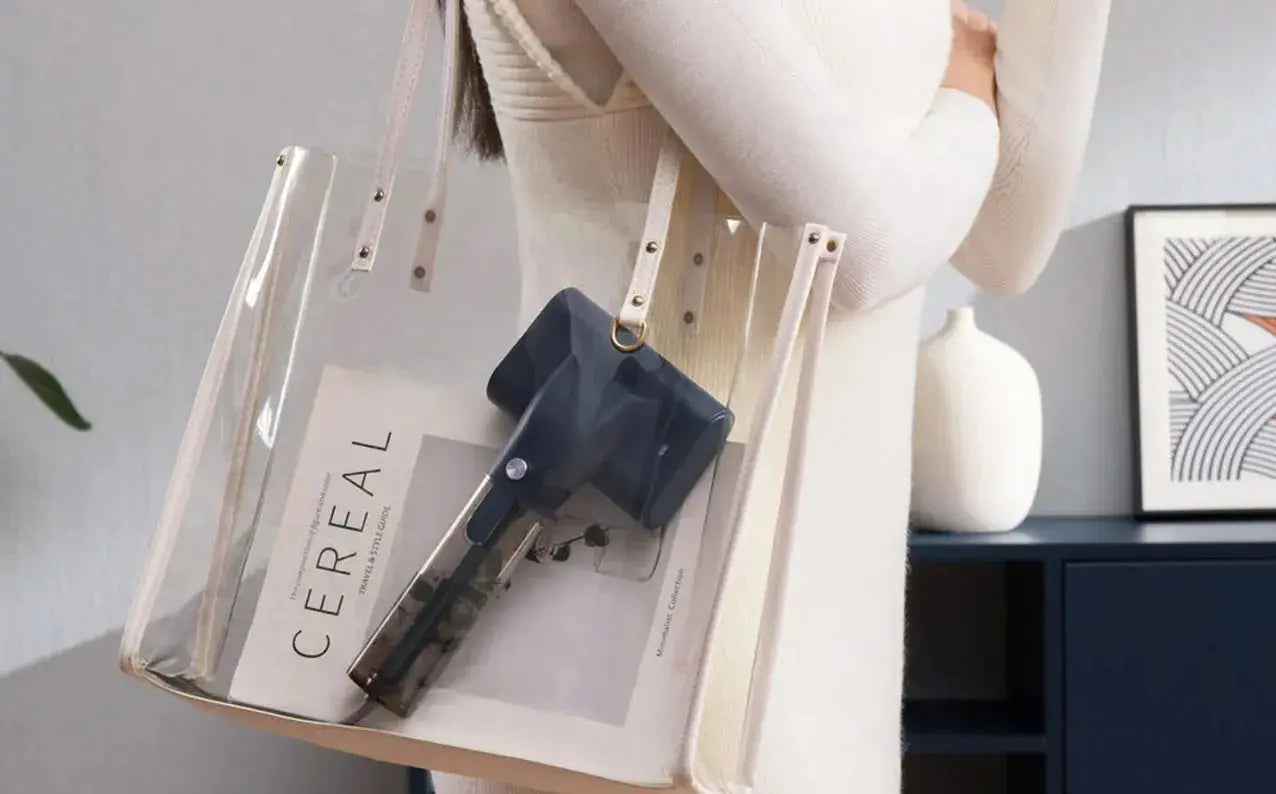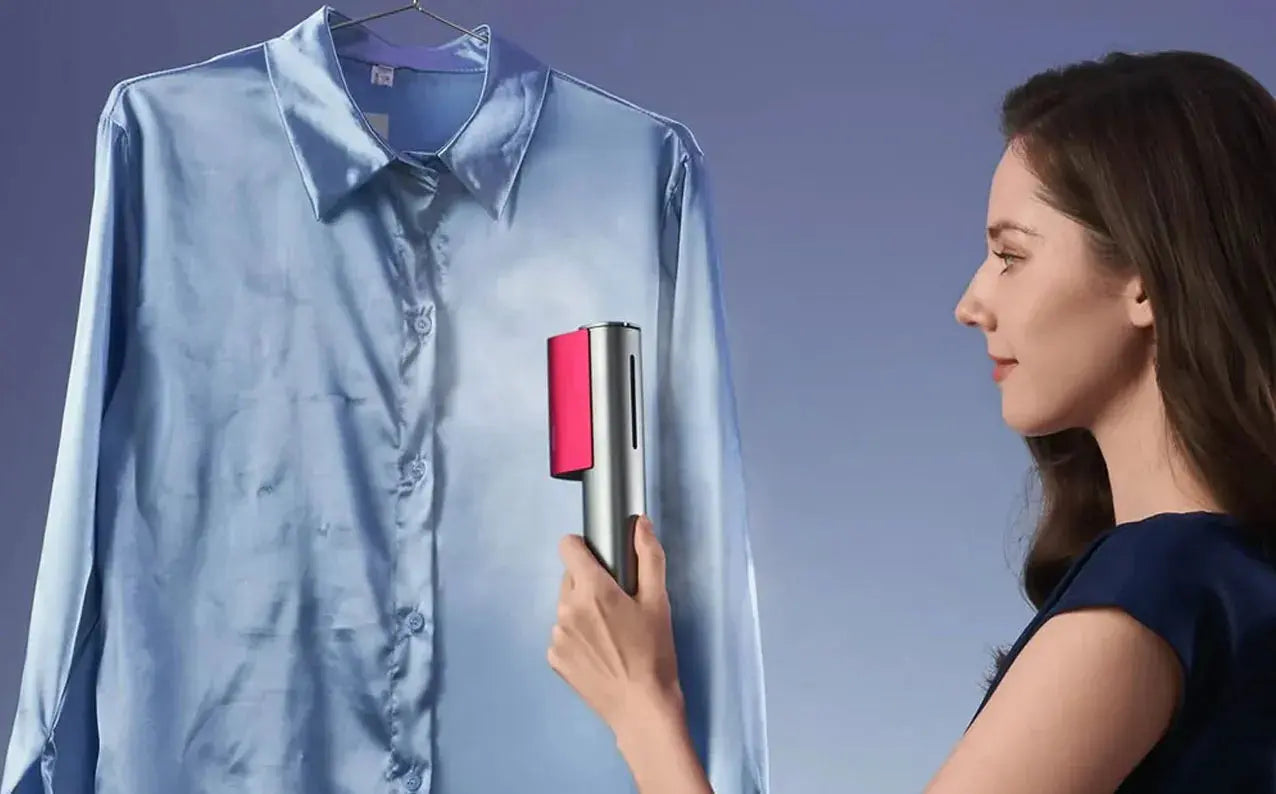I and the Cloth Steamer: A Practical Guide for Maintaining Good Appearance at the Exhibition Site
I'm an international trade show operations manager. My job is to lead the team that sets up booths, manages layouts, handles client requests, and keeps the whole show running smoothly. You might think the hardest problems are big things like lighting or logistics, but that's not the whole story.
Most people think the hardest parts are lighting, sound, or logistics. In reality, it's the "small stuff" — wrinkled uniforms, samples crushed in transit, or the host's dress suddenly looking terrible — that trips me up.
At those moments, a sloppy-looking stage just won't cut it. If clothing or displays look messy, clients notice immediately — and not in a good way. That's why I never leave for a show without a cloth steamer in my bag. It's more than a tool — it's my quick fix when something goes wrong.
In this business, time is money. Setups are tight — we sometimes work until dawn and then greet guests that morning. Chasing down an iron is a hassle and can be unsafe, and many venues don't even have one. That's why a steamer helps so much:
Quickly restore clothing and samples: The clothes worn by the models during the show, the shirts on display, and even the fabric backgrounds hung on the display boards can all be flattened back to shape fast.
High flexibility: I have used it at the booth backstage, in hotel rooms, and even in the waiting area. It can be set up with just a few minutes of power connection.
Save space: The device is not large. Just place it in the corner of the luggage compartment. It won't compete for space with the lamp stand or display stand.
Once at a large exhibition in Europe, our sample clothes were flown in from Asia. The samples arrived folded and wrinkled from transit. With only three hours left until the exhibition started, the team was looking worried. I pulled out the steamer and, in under twenty minutes, had the key samples looking presentable again. At that moment, I knew this little machine had saved the show.
There was another occasion at the exhibition hall in the Middle East. The climate was dry and hot. Staff uniforms, after being packed and unpacked, looked tired and wrinkled. I quickly dealt with each one of them backstage. In under thirty minutes, the team went from looking wilted to presentable. When the clients came over, their first words were: "Your team looks really professional." The real payoff is that a quick steam makes the whole team look put together.
The method I often use (the five-step method)
To save time on site, I use a simple five-step routine:
Hang up the clothes: Use the crossbars of the display stand, the display board, or the hotel's clothes hangers to keep them hanging naturally and smoothly.
Preheat to achieve stable steam output: Don't rush. Wait until the steam is stable before using it; otherwise, water may drip.
Gently pull the fabric: Use one hand to gently stretch the fabric, or wear heat-resistant gloves to increase the tension.
Top-down sweeping: Proceed from the collar → shoulders → cuffs → body → hem in sequence, maintaining a distance of 1-3 inches.
Settle and shape: After the steam treatment, allow the fabric to cool for 30 seconds before wearing or displaying.
On site I can usually fix a shirt in about a minute, and it’s pretty efficient.
Tips for Different Materials
Silk / Lace / Lightweight chiffon: Use low-steam settings, at a distance, and try to handle it from the inner layer of the garment.
Wool / Cashmere / Coarse Tweed: Follow the direction of the fibers, gently brush several times to avoid any water residue.
Cotton and linen / suit fabric: Medium-high steam, stretch the fabric edges, and you’ll see the fastest results.
I picked up these tricks over years of working in exhibition halls around the world. Each handling situation reminded me that fabric, just like exhibition projects, requires patience and methods.

Applications outside the exhibition venue
Even when not at the exhibition, I still use the cloth steamer frequently. The wardrobes in the hotels where I'm on business trips usually don't have decent ironing equipment, yet the schedule is packed with events one after another. With it, I can quickly iron my shirts before attending a client's dinner party, or neatly smooth out my suit jacket while on the way to the airport. By now, it’s as essential in my suitcase as my laptop and client files.
Conclusion
In this line of work, small details can make or break a show. A small crease might not sound like a big deal, but left unchecked it can instantly hurt how professional a team looks. For me, a cloth steamer is not just a time-saving gadget, but also a way to maintain order and dignity in the working environment.
So, if you, like me, need to maintain proper appearance in a high-pressure and fast-paced environment, you might consider carrying a cloth steamer with you. It won't solve all problems, but in critical moments, it can help you stay composed and leave a good first impression on others regarding your professionalism.





